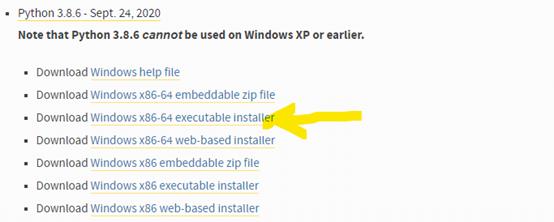CNN入门mnist数据集运行环境搭建(安装Python,Pycharm,Anaconda,Tensorflow,CNN代码)
Posted m0_55624182
tags:
篇首语:本文由小常识网(cha138.com)小编为大家整理,主要介绍了CNN入门mnist数据集运行环境搭建(安装Python,Pycharm,Anaconda,Tensorflow,CNN代码)相关的知识,希望对你有一定的参考价值。
安装环境运行大致步骤:
- Python安装:选择3.8,安装教程具体可查看:https://blog.csdn.net/liming89/article/details/109632064?ops_request_misc=&request_id=&biz_id=102&utm_term=pycharm%E5%AE%89%E8%A3%85%E6%95%99%E7%A8%8B&utm_medium=distribute.pc_search_result.none-task-blog-2allsobaiduweb~default-7-.pc_search_result_before_js&spm=1018.2226.3001.4187
下载官网:https://www.python.org/downloads/

-
Pycharm 编辑器下载安装:下载官网:
https://www.jetbrains.com/pycharm/download/#section=windows
安装教程与Python安装教程在一起 -
环境变量配置:配置教程:
https://www.cnblogs.com/huangbiquan/p/7784533.html -
安装Anaconda:选择Anaconda3,安装教程具体可查看:
https://blog.csdn.net/u010210864/article/details/94580873
下载官网:https://www.anaconda.com/products/individual

-
按步骤4教程安装Tensorflow:
-
试运行CNN训练mnist数据集的代码:
# -*- coding: utf-8 -*-
# 使用卷积神经网络训练mnist数据集
import gzip
from tensorflow.keras.datasets import mnist
from tensorflow.keras.utils import to_categorical
import tensorflow as tf
from tensorflow.keras.layers import Input, Dense, Conv2D, MaxPooling2D, Flatten, Reshape
import numpy as np
from sklearn.metrics import classification_report
import datetime
'''
# 装载数据集(从网上下载)
(train_images, train_labels), (test_images, test_labels) = mnist.load_data()
'''
# 装载数据集(本地导入)
def load_data():
path = r"E:\\PythonProject\\CNN\\MNIST_data\\mnist.npz"
f = np.load(path)
train_images, train_labels = f['x_train'], f['y_train']
test_images, test_labels = f['x_test'], f['y_test']
f.close()
return (train_images, train_labels), (test_images, test_labels)
def load_data1():
path = "E:\\\\PythonProject\\\\CNN\\\\MNIST_data\\\\"
files = [path + 'train-images-idx3-ubyte.gz', path + 'train-labels-idx1-ubyte.gz',
path + 't10k-images-idx3-ubyte.gz', path + 't10k-labels-idx1-ubyte.gz']
# print(file)
with gzip.open(files[0], 'rb') as ip:
# 6万张训练图片
train_images = np.frombuffer(ip.read(), np.uint8, offset=16)
train_images = train_images.reshape(60000, 28, 28)
with gzip.open(files[1], 'rb') as lp:
train_labels = np.frombuffer(lp.read(), np.uint8, offset=8)
with gzip.open(files[2], 'rb') as ip2:
# 1万张测试图片
test_images = np.frombuffer(ip2.read(), np.uint8, offset=16)
test_images = test_images.reshape(10000, 28, 28)
with gzip.open(files[3], 'rb') as lp2:
test_labels = np.frombuffer(lp2.read(), np.uint8, offset=8)
# print(train_image)
return (train_images, train_labels), (test_images, test_labels)
if __name__ == '__main__':
# (train_images, train_labels), (test_images, test_labels) = load_data()
# print(len(train_labels))
(train_images, train_labels), (test_images, test_labels) = load_data1()
print(len(train_labels))
# 数据预处理
train_images = train_images.reshape((len(train_images), 28, 28, 1))
#此处采用float32是权衡了时间何空间开销,float64精度高,但数据集会大大占用消耗的内存, 像素值映射到 0 - 1 之间
train_images = train_images.astype('float32')/255
test_images = test_images.reshape((len(test_images), 28, 28, 1))
test_images = test_images.astype('float32')/255
train_labels = to_categorical(train_labels) # one-hot编码
test_labels = to_categorical(test_labels)
# 添加模型
model1 = tf.keras.models.Sequential()
#第1层卷积,卷积核大小为3*3,32个,28*28为待训练图片的大小
model1.add(Conv2D(32, (3, 3), activation='relu', input_shape=(28, 28, 1)))
model1.add(MaxPooling2D((2, 2)))
# 第2层卷积,卷积核大小为3*3,64个,激活函数relu
model1.add(Conv2D(64, (3, 3), activation='relu'))
model1.add(MaxPooling2D((2, 2)))
# 第3层卷积,卷积核大小为3*3,64个
model1.add(Conv2D(64, (3, 3), activation='relu'))
# 添加分类器
model1.add(Flatten())
model1.add(Dense(64, activation='relu'))
model1.add(Dense(10, activation='softmax'))
# 模型编译
model1.compile(optimizer='rmsprop', loss='categorical_crossentropy', metrics=['accuracy'])
# 保存模型数据到.\\results\\tb_results\\路径下
log_dir = '.\\\\results\\\\tb_results\\\\' + datetime.datetime.now().strftime("%Y%m%d-%H%M%S")
tensorboard_callback = tf.keras.callbacks.TensorBoard(log_dir=log_dir, histogram_freq=1)
# 训练模型
model1.fit(train_images, train_labels, epochs=5, batch_size=128, callbacks=([tensorboard_callback]))
# 在测试集上对模型进行评估
test_loss, test_acc = model1.evaluate(test_images, test_labels)
print(test_loss, test_acc)
# print(model1.summary())
以上是关于CNN入门mnist数据集运行环境搭建(安装Python,Pycharm,Anaconda,Tensorflow,CNN代码)的主要内容,如果未能解决你的问题,请参考以下文章